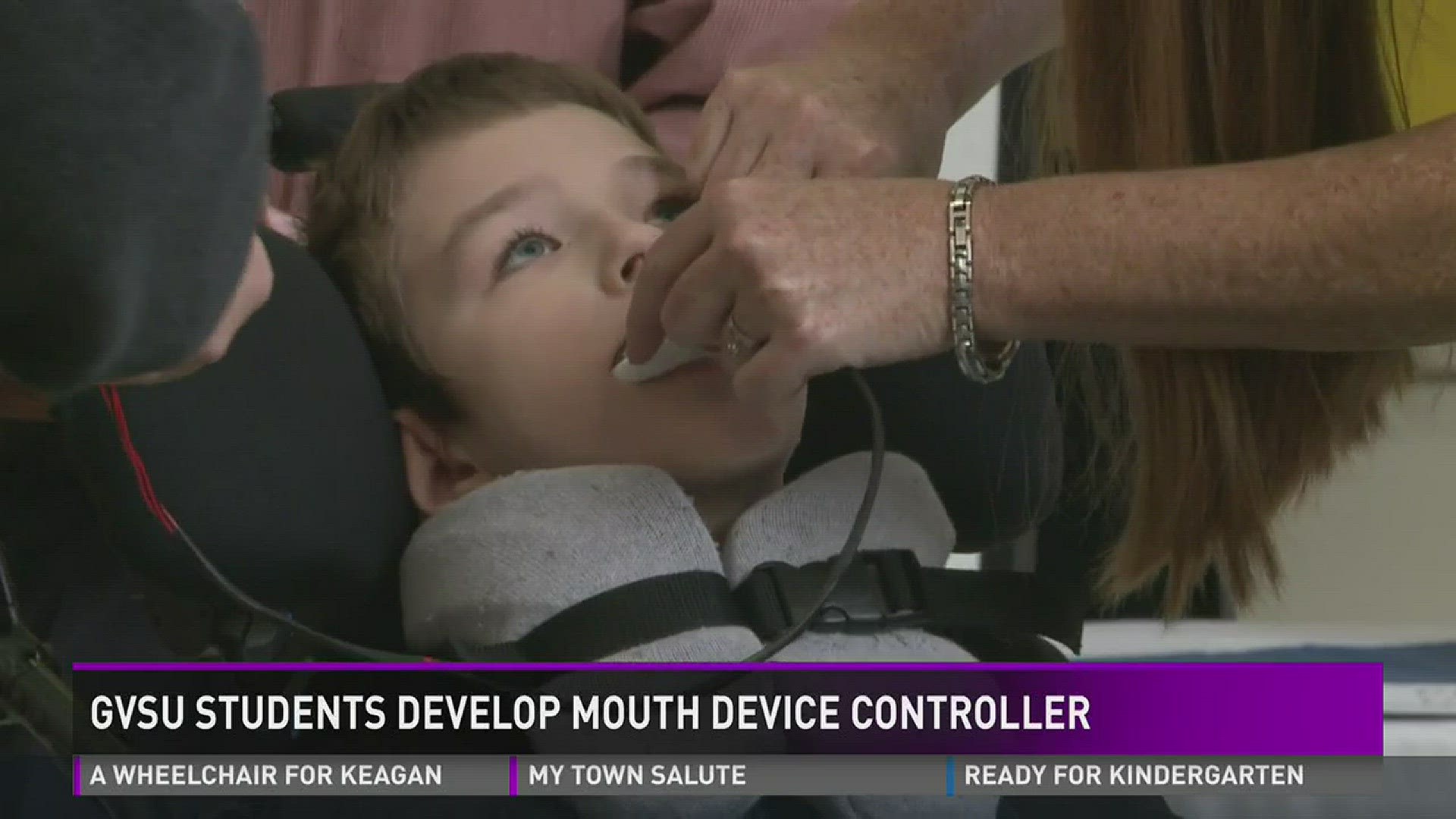Keagan Curtis is a normal boy who wants to run and play just like any other boy, except he can't.
"He asks all the time," says his mom, Natalie. "'Why can't I do that like the other kids?'"
Keagan was born at 26 weeks, weighing just under two pounds: "We found out probably about six months of age that things weren't developing right," Natalie said.
Yet despite his limitations, he is an incredibly active boy.
From baseball to horseback riding, nothing seems to keep Keagan from trying to live a normal life. Keagan’s dad, Shane, says his only limitation is his wheelchair.
"When he plays in the Miracle League, I push him, so it would be awesome if I could still be there but he could run the bases himself," Shane said.
And that might soon happen. Thanks to a collaboration between GVSU engineering students and Dr. Kevin Knapp, a pediatric orthodontist at Little Smiles Grand Haven.
"So this is basically a 3D puzzle piece, and we're going to take individual pictures of Keagan's teeth," Knapp said as he worked on a retainer for Keagan's mouth. Four GVSU engineering students will use it to make a device so Keagan can operate his own electric wheelchair -- with his tongue.
It's the only part of his body he has complete control of.
The project is part of GVSU's engineering program, where students partner with sponsors from the community to help solve a problem -- in this case, GVSU student Alissa Smith says the problem is finding a way for Keagan to operate a wheelchair.
"They would really like to have this device be wireless, which is difficult because we have to house a Bluetooth device, a microcontroller, inside the mouth along with buttons and a battery, so that's a lot of components to be inside a 9-year-old's mouth," Smith said.
The first step is to try and design buttons for Keagan to press with his tongue that will turn the wheelchair right, left, forward and back.
“The buttons will be placed on the sides, so he can press against the buttons and have more force to do that," Smith said.
Student partner Michelle Kern says having the ability to try different buttons is key: "So with having those 3D tools, we can do a lot more testing."
It takes about five minutes to print each button in 3D; however, the real test will be on Keagan -- hoping he can press the buttons and make the connection.
And he does. One more exciting step in the right direction.
"This is surprising, yeah -- especially that all of them worked," said GVSU student partner James Sharp, who's already thinking about the next step. "So the next thing to do is to start to program, to tell them what to communicate."
Now it's back to the computer lab and one step closer to giving Keagan his independence.
Engineering Professor John Ferris assists his students in problem solving the project. Knowing what's at stake is bigger than just a classroom assignment.
"What we want to show is that Keagan has the cognitive ability to control a power wheelchair. Once we can show that, then his insurance company will agree to pay for the wheelchair," Ferris said, "and we can do the development for a more permanent solution."
While there's been success in finding a button Keagan can press with his tongue, it's not the end of the road. Learning how they work is challenging.
”If you think about trying to find a specific location on the roof of your mouth and be able to sustain that push so you can move a power mobility device forward or to the right or left and maneuver, that's pretty hard," said Dr. Lisa Kenyan. She is Keagan's physical therapist and has been assisting the students in helping Keagan practice.
But after several practice sessions, he's ready to hit the open hallway -- which proves to be an emotional moment for mom: "I feel like I'm going to cry right now. It's just a blessing to be able to do something like this."
As for the students, this project has been more than just a grade for these four engineers.
"When you see Keagan in front of you, it's definitely a goal for you. You push yourself harder and to limits you didn't think you could do before," Smith said. "There were a lot of times when we thought we had it, and one minute something would go wrong and it would just derail us."
Despite their many setbacks, student Michelle Kerns says they weren't willing to give up.
"You almost feel like maybe it won't work because it hasn't worked for so long, but as soon as he got it and put it in his mouth and he started going -- we're all, like, so excited."
Their experience with Keagan gave them not only a sense of purpose but a change in career direction.
For Keagan's parents, “just seeing your child be able to be independent for once is an amazing feeling."
It means hope for the future and an independent life.
The Curtis family has set up a GoFundMe pate to help pay for the van needed to haul Keagan’s new power wheelchair. If you’d like to help search “Keagan’s Ramp Van" or visit the page on GoFundMe's website.

